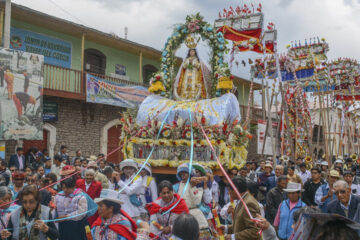What Secrets Do Family Recipes Hold?
Mexican food isn’t just about flavor—it’s about history, tradition, and the stories passed down from one generation to the next. Every dish has a meaning, every ingredient a purpose, and every recipe a history that connects families to their roots. When I was little, my grandmother—my dad’s mom—would let me stand beside her in the kitchen, watching as she carefully prepared meals that had been in our family for generations. She never wrote down her secret recipes, and to this day, she refuses to share them unless someone is with her, actively learning.
That’s the beauty of Mexican recipes and food. It’s not just something you eat—it’s something you experience, something you inherit. And when it’s passed down like this, it becomes more than just food; it becomes a story.
Learning in My Grandmother’s Kitchen
I still remember the first time my grandmother let me help her make tortillas from scratch. I must have been around six, standing on a small stool so I could reach the countertop. She moved effortlessly, her hands knowing exactly how much masa to scoop, how long to press, and how to cook each tortilla until it had just the right amount of golden brown spots.
“Feel the dough,” she told me, placing my small hands over hers. “It will tell you when it’s ready.”
I didn’t understand at the time, but now I realize what she meant. Mexican food is about intuition—knowing when something is just right, not by measuring cups or written instructions but by touch, smell, and experience. That’s why she never writes her secret recipes down. She believes food should be learned by doing, not by reading.
Even now, if someone asks her how to make her special mole or tamales, she’ll smile and shake her head. “You want to learn? Come stand next to me,” she’ll say.
And that’s exactly how I learned. Not by looking at a recipe but by standing beside her, feeling the textures, smelling the spices, and watching every careful movement she made.
More Than Just a Meal—A Connection to Culture
Every time I step into a kitchen, I hear my grandmother’s voice in my head. She taught me that food is one of the strongest connections to our culture. Every dish tells a story of where we come from and the people who came before us.
Take mole, for example. It’s a dish that carries centuries of history, blending indigenous ingredients like cacao and chiles with influences from Spain. My grandmother’s mole is unlike any other, rich and deep in flavor, with just the right balance of spice and sweetness. She says it tastes the way it does because it holds the memories of every time she’s made it, of every person who has sat at her table to eat it.
Then there are tamales, wrapped in corn husks, a dish that dates back to the Aztecs and Mayans, who considered corn sacred. My grandmother always says that tamales taste best when made in large batches, with family gathered in the kitchen, each person with a role—someone spreading the masa, another filling, another wrapping. “Tamales aren’t just food,” she says. “They’re meant to be made together.”
And of course, there’s caldo de pollo, the dish my grandmother swears can cure anything—whether it’s a cold, a broken heart, or just a long day. “A bowl of caldo,” she’d say, “can make the world feel right again.”
That’s the magic of Mexican food. It’s not just about nourishment—it’s about comfort, history, and the bonds we share when we cook and eat together.
The Unwritten Recipes
To this day, my grandmother has never written down a single one of her secret recipes. She has no worn-out cookbook or stack of index cards. Instead, her recipes live in her mind and hands, passed down only through time spent together in the kitchen.
For years, family members have tried to get her to share them. “Just write it down for us,” they say. “At least for the future.” But she always laughs and waves them off.
“It doesn’t work like that,” she insists. “You have to feel it, see it, smell it. If I just write it down, you won’t really know.”
At first, I didn’t understand. It seemed simple enough to write a list of ingredients, a few steps, and the right cooking time. But as I grew older and spent more time cooking with her, I realized she was right. Her recipes aren’t just about the ingredients—they’re about technique, patience, and intuition. A written recipe could never capture that.
Passing Down Tradition, One Recipe at a Time
The way my grandmother teaches her secret recipes reminds me that food is about more than just eating—it’s about preserving traditions. In a world where fast food and convenience meals are everywhere, these passed-down recipes feel even more special.
When I cook with my grandmother, I feel connected to her, to my dad, and to the long line of family before us. It’s a reminder that culture isn’t just something in history books—it’s alive in our kitchens, in our hands, in the way we prepare and share meals with others.
It makes me think about how, one day, I’ll be the one carrying these recipes forward. Maybe I’ll never write them down either. Maybe I’ll teach them just as she does—by inviting someone into the kitchen, guiding their hands, and letting them learn by doing.
Because that’s how tradition survives—not on paper, but in memories, in experiences, in the love we put into every meal.
What’s Your Family’s Favorite Passed-Down Recipe?
Food is a powerful way to keep family traditions alive. Every family has that one dish that carries meaning, that one recipe passed down from generation to generation. What’s yours? Share your family’s favorite passed-down recipe in the comments—I’d love to hear your stories!
¿Qué secretos guardan las recetas familiares?
La comida mexicana no es solo sabor, sino también historia, tradición y las historias que se transmiten de una generación a otra. Cada platillo tiene un significado, cada ingrediente un propósito y cada receta una historia que conecta a las familias con sus raíces. Cuando era pequeña, mi abuela—la mamá de mi papá—me dejaba pararme a su lado en la cocina, observándola mientras preparaba cuidadosamente platillos que habían estado en nuestra familia por generaciones. Nunca escribía sus recetas secretas y, hasta el día de hoy, se niega a compartirlas a menos que alguien esté con ella, aprendiendo activamente.
Esa es la belleza de la comida mexicana. No es solo algo que comes, es algo que experimentas, algo que heredas. Y cuando se transmite de esta manera, se convierte en más que solo comida; se convierte en una historia.
Aprendiendo en la cocina de mi abuela
Todavía recuerdo la primera vez que mi abuela me dejó ayudarla a hacer tortillas desde cero. Debía tener unos seis años, parada sobre un pequeño banquito para alcanzar la encimera. Ella se movía sin esfuerzo, sus manos sabían exactamente cuánta masa tomar, cuánto presionar y cómo cocinar cada tortilla hasta que tuviera la cantidad justa de manchitas doradas.
“Siente la masa”, me dijo, colocando mis pequeñas manos sobre las suyas. “Te dirá cuándo está lista.”
No lo entendí en ese momento, pero ahora me doy cuenta de lo que quería decir. La comida mexicana se trata de intuición—saber cuándo algo está en su punto, no por tazas medidoras o instrucciones escritas, sino por el tacto, el olor y la experiencia. Por eso nunca escribe sus recetas secretas. Cree que la comida se debe aprender haciendo, no leyendo.
Incluso ahora, si alguien le pregunta cómo hacer su mole especial o sus tamales, ella sonríe y sacude la cabeza. “¿Quieres aprender? Ven y párate a mi lado”, dice.
Más que solo una comida—Una conexión con la cultura
Cada vez que entro a una cocina, escucho la voz de mi abuela en mi cabeza. Me enseñó que la comida es una de las conexiones más fuertes con nuestra cultura. Cada platillo cuenta la historia de dónde venimos y de las personas que vinieron antes que nosotros.
Toma el mole, por ejemplo. Es un platillo que carga siglos de historia, mezclando ingredientes indígenas como el cacao y los chiles con influencias de España. El mole de mi abuela es único, rico y profundo en sabor, con el equilibrio perfecto entre lo picante y lo dulce. Ella dice que sabe así porque contiene los recuerdos de cada vez que lo ha preparado, de cada persona que se ha sentado en su mesa para comerlo.
La comida mexicana está llena de este tipo de historias. Los tamales envueltos en hojas de maíz nos recuerdan a las civilizaciones antiguas que usaban el maíz como el corazón de su dieta. El pan dulce, con sus coloridos azúcares, es una mezcla de tradiciones indígenas y europeas. Incluso algo tan simple como un tazón de caldo de pollo en una noche fría lleva consigo el calor y el amor de generaciones.
Transmitiendo la tradición, una receta a la vez
La forma en que mi abuela enseña sus recetas secretas me recuerda que la comida es más que solo alimentarse—es una manera de preservar tradiciones. En un mundo donde la comida rápida y las comidas instantáneas están en todas partes, estas recetas transmitidas se sienten aún más especiales.
Cuando cocino con mi abuela, me siento conectada a ella, a mi papá y a la larga línea de familia antes de nosotros. Es un recordatorio de que la cultura no es solo algo que se encuentra en los libros de historia, sino algo vivo en nuestras cocinas, en nuestras manos, en la forma en que preparamos y compartimos las comidas con los demás.
Por eso atesoro estas lecciones. Un día, cuando ella ya no esté para guiarme, quiero poder hacer sus platillos exactamente como ella los hacía. Y tal vez, solo tal vez, los transmitiré de la misma manera que ella—no con una tarjeta de recetas, sino con las manos cubiertas de harina, guiando a alguien más en el proceso.
¿Cuál es la receta familiar que más valoras?
La comida es una forma poderosa de mantener vivas las tradiciones familiares. Cada familia tiene ese platillo que tiene un significado especial, esa receta que se ha transmitido de generación en generación. ¿Cuál es la tuya? Comparte tu receta familiar favorita en los comentarios—¡me encantaría conocer sus historias!



1 Comment
Manuel Herrera · March 17, 2025 at 4:52 pm
Love it love ir love it!
Comments are closed.